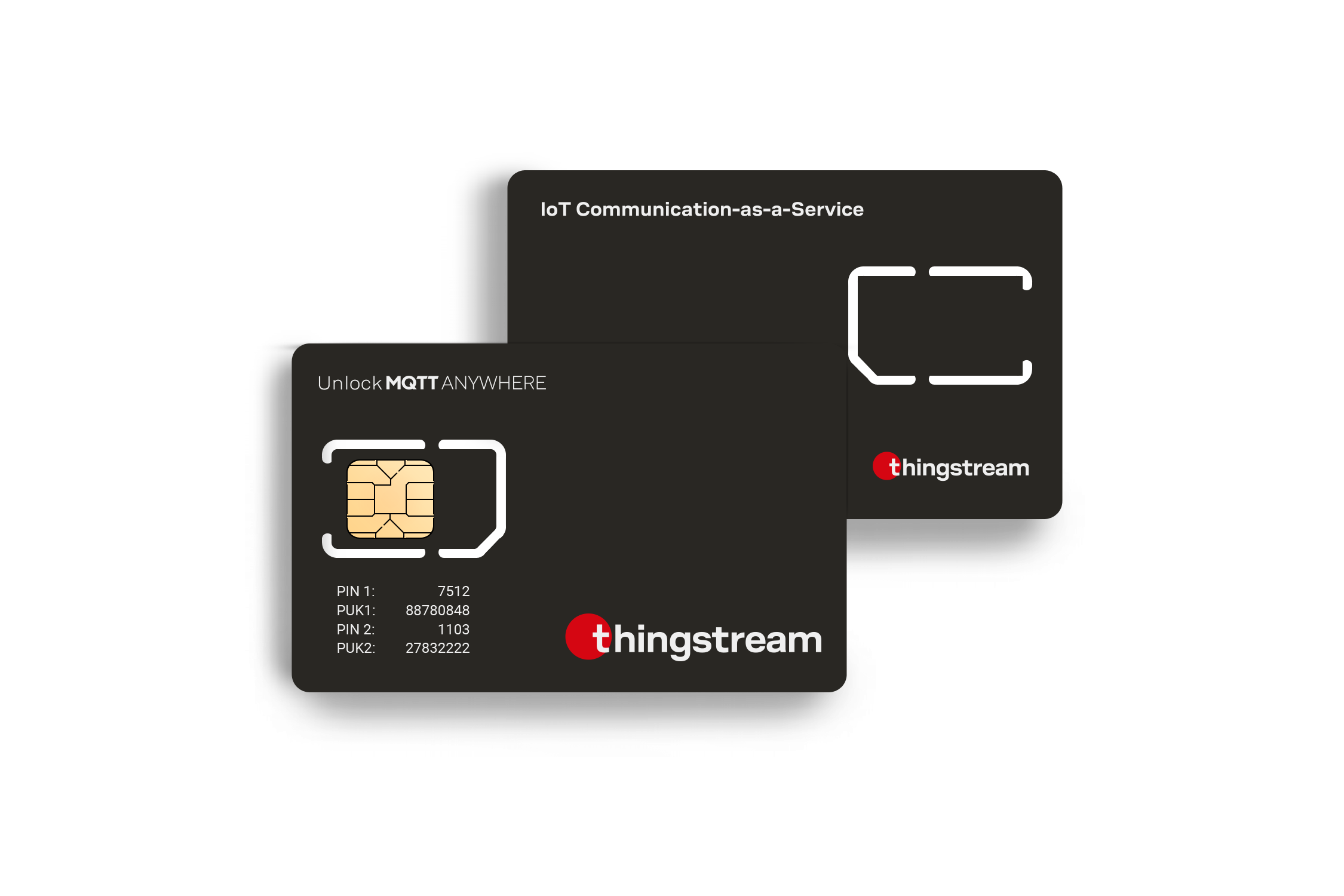Iot Single Sim Card IoT SIMs Any Device Anywhere
Iot Single Sim Card IoT SIMs Any Device Anywhere
Blog Article
Iot Sim Card Providers IoT SIM cards
In the ever-evolving panorama of the Internet of Things (IoT), connectivity options play a critical role in determining the success and scalability of various purposes. Among the necessary thing contenders are Wi-Fi and Low Power Wide Area Networks (LPWAN), each offering distinct benefits and challenges. Understanding their differences is important for those trying to deploy IoT solutions effectively.
Wi-Fi technology, familiar to most consumers, provides high-speed web entry throughout a wide selection of units. Its infrastructure is widespread, permitting for instant deployment in properties, workplaces, and public areas. With the best setup, Wi-Fi can offer high data charges, making it appropriate for purposes requiring real-time knowledge transmission, such as video streaming or intensive data logging.
Despite its advantages, Wi-Fi comes with limitations that may impact IoT options. It typically operates inside a limited range, typically around a couple of hundred toes, relying on environmental elements. This short-range capability may not be adequate for purposes requiring in depth protection, significantly in rural or industrial settings. The dense networks of related devices can even result in congestion, affecting reliability and performance.
Iot Sim Card IoT SIM
LPWAN, then again, was designed specifically for IoT applications requiring long-range connectivity. Technologies like LoRaWAN, Sigfox, and NB-IoT fall underneath this class, providing sturdy solutions for low-bandwidth however high-volume data transmission over vast distances. LPWAN units can transmit information over several kilometers, making them perfect for smart agriculture, environmental monitoring, and asset monitoring.
Another crucial feature of LPWAN is its low energy consumption. Devices can typically run for years on small batteries, making them notably suitable for applications where frequent battery replacement is impractical. Sim Card For Iot. This functionality allows for distant installations in challenging environments, the place regular maintenance can be expensive or time-consuming.

Wi-Fi requires consistent energy ranges and often wants frequent power supply, which is often a hindrance in sure IoT purposes. For instance, smart meters or remote sensors that have to be deployed in hard-to-reach areas struggle when tied to conventional energy sources. LPWAN offers a breakthrough by permitting long-duration information transmission with minimal energy requirements.
Iot Sim Card Guide What is an IoT SIM Card?
The nature of data switch is one other area the place Wi-Fi and LPWAN diverge. Wi-Fi supports high-bandwidth purposes, enabling the switch of large amounts of knowledge swiftly. Streaming movies or transferring large information turns into much more possible, which is important in certain sectors. However, this functionality can result in increased costs and complexities in community management.
Conversely, LPWAN focuses on sending small packets of information at infrequent intervals, fitting completely for monitoring eventualities. Sensor readings, status updates, and alerts could be pushed periodically without the overhead related to high-bandwidth methods. This simplicity not solely improves battery life but additionally reduces general operational costs.
Sim Card Per Iot IoT SIM Cards Explained Connectivity

Security is all the time a key concern in IoT deployments. Wi-Fi networks, whereas usually outfitted with robust safety protocols, are still vulnerable to intrusion and unauthorized access. The reliance on established network infrastructures means they usually turn out to be targets for malicious actions.
LPWAN supplies a more closed network, typically designed particularly for IoT functions, which inherently increases security against external threats. With lower visibility to the public internet, these networks can safeguard critical data with heightened protocols. Nonetheless, the specific security measures depend upon the chosen LPWAN expertise and how the system is architected.
Iot Sim Card Pricing IoT SIM
Deployment costs additionally play a major function in deciding between Wi-Fi and LPWAN. Setting up a Wi-Fi community can contain considerable bills associated to the installation of routers and repeating i loved this devices, especially for extensive protection areas. On the contrary, LPWAN solutions typically require lower initial investments, primarily as a result of fewer infrastructure dependencies and less hardware.
Choosing the proper connectivity method ultimately is determined by the precise necessities of the application. If the use case calls for high knowledge rates and real-time communication, Wi-Fi may be most popular regardless of its challenges. For eventualities demanding long-range coverage and low power consumption, LPWAN is most likely going the better selection.
In crafting IoT solutions, decision-makers should also account for scalability. As the variety of devices grows, the network should have the flexibility to deal with elevated site visitors. Wi-Fi networks can turn out to be saturated quickly, especially in crowded settings, resulting in unreliable connections. LPWAN, with its ability to support thousands of low-power gadgets throughout large areas, sometimes demonstrates higher scalability.
Exploring hybrid approaches can offer a comprehensive answer for a lot of purposes. For instance, a project might benefit from Wi-Fi for specific duties requiring high data throughput, while utilizing LPWAN for units needing long-range and low-power operation. This combination leverages the distinctive strengths of both technologies whereas mitigating their weaknesses.
Vodafone Iot Sim Card IoT Shattering Connectivity Expectations
The future of IoT connectivity doubtless lies in a extra integrated method, the place a quantity of technologies coexist to serve varied wants. The fast innovation inside each Wi-Fi and LPWAN standards suggests a promising evolution in capabilities. Ongoing developments in safety measures, energy effectivity, and cost-effectiveness will proceed to form how organizations adopt connectivity solutions.
In summary, Wi-Fi and LPWAN represent two distinct but important paradigms within the realm of IoT connectivity. The alternative between the 2 hinges on particular use-case situations, including range, power necessities, information wants, and security considerations. Organizations must fastidiously consider these parameters to make knowledgeable selections that align with their operational goals. Understanding the nuances of both technologies will information companies toward successfully deploying IoT options tailor-made to their unique demands.
- Wi-Fi provides high knowledge transfer charges suitable for purposes requiring large bandwidth, whereas LPWAN excels in scenarios needing low knowledge throughput with long-range connectivity.
- The deployment of Wi-Fi ensures easy access in city areas, but LPWAN is designed to succeed in distant and rural places the place cellular infrastructure could also be lacking.
- Wi-Fi networks generally require extra energy consumption due to steady connection demands, whereas LPWAN gadgets prioritize battery life, usually working for years on a single cost.
- Security protocols differ, with Wi-Fi networks prone to unauthorized entry if not properly secured, whereas LPWAN technologies often use built-in encryption mechanisms that improve data security.
- Wi-Fi networks typically help a restricted number of related gadgets simultaneously, whereas LPWAN can accommodate an enormous variety of devices within a single community without congestion issues.
- The latency in Wi-Fi is minimal, permitting for real-time information transmission, while LPWAN would possibly experience higher latency, appropriate for non-time-sensitive functions.
- Wi-Fi infrastructure can require frequent maintenance and upgrades, whereas LPWAN networks are often easier to handle over lengthy periods as a end result of fewer parts and lower complexity.
- Interference from neighboring Wi-Fi signals can affect connectivity, whereas LPWAN operates in much less congested frequency bands, enhancing reliability for IoT functions.
- Wi-Fi is usually seen as an indoor connectivity resolution ideal for smart properties and offices, while LPWAN is best fitted to outside purposes such as smart agriculture and environmental monitoring.
- Cost implications vary; establishing Wi-Fi networks can be costly as a outcome of hardware needs, whereas LPWAN may provide a extra economical and scalable resolution for large-scale IoT deployments.undefinedWhat is the main difference between Wi-Fi and LPWAN for IoT connectivity?
Wi-Fi offers high-speed data transmission over short distances, making it ideal for purposes needing high bandwidth. In contrast, LPWAN is designed for long-range communication with low power consumption, greatest fitted to units that require rare knowledge transmission.
Iot Gsm Sim Card IoT SIMs Any Device Anywhere
Which use cases are better suited for Wi-Fi in IoT applications?
Wi-Fi is optimal for urban settings where units need continuous internet access, similar to smart house home equipment, video surveillance, and high-bandwidth sensors that operate inside quick to medium ranges.
What are the important thing advantages of you could try this out using LPWAN for IoT connectivity?
LPWAN excels in in depth coverage, low power consumption, and cost-effectiveness for big deployments. It's particularly advantageous for distant monitoring functions like smart agriculture, utility meters, and environmental sensors.
Iot Sim Card South Africa The Ultimate Guide IoT SIM Cards
How does the energy consumption of Wi-Fi compare to LPWAN?
Wi-Fi typically consumes more energy, especially during continuous knowledge transmission, whereas LPWAN networks are designed for units that ship small quantities of information infrequently, resulting in significantly lower energy requirements.
Iot Sim Card South Africa IoT SIM card

Can Wi-Fi and LPWAN coexist in an IoT environment?
Yes, combining Wi-Fi and LPWAN can be beneficial. Wi-Fi can deal with high-bandwidth duties while LPWAN manages low-power, long-range communications, allowing for a flexible and environment friendly IoT ecosystem. Cheap Iot Sim Card.
What are the security implications of using Wi-Fi vs. LPWAN?
Nb-Iot Sim Card IoT SIM card Affordable global connectivity
Wi-Fi implementations often have stronger, standardized security protocols but can be extra prone to unauthorized entry in congested areas. LPWAN safety can differ but generally offers decreased assault surfaces due to easier communication.
Which know-how supports a bigger variety of units in a given area?
LPWAN supports a bigger variety of gadgets because of its low-power, low-bandwidth architecture that can handle connections over huge distances. Wi-Fi, whereas able to handling a number of connections, could wrestle in densely populated environments due to bandwidth limitations.
How does the deployment value of Wi-Fi compare to LPWAN?
Iot Sim Card Providers M2M IoT SIM Cards
Wi-Fi might have higher initial deployment prices because of infrastructure requirements corresponding to routers and access points. LPWAN usually entails lower setup costs, particularly when leveraging current networks or decentralized architectures.

What should I contemplate when selecting between Wi-Fi and LPWAN for my IoT project?
Consider the particular necessities of your software: required range, energy consumption, data transmission frequency, and bandwidth wants (Sim Card Iot Devices). Each technology has its strengths; aligning your alternative with these parameters will enhance total performance.
Report this page